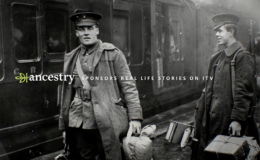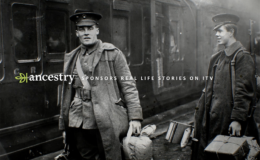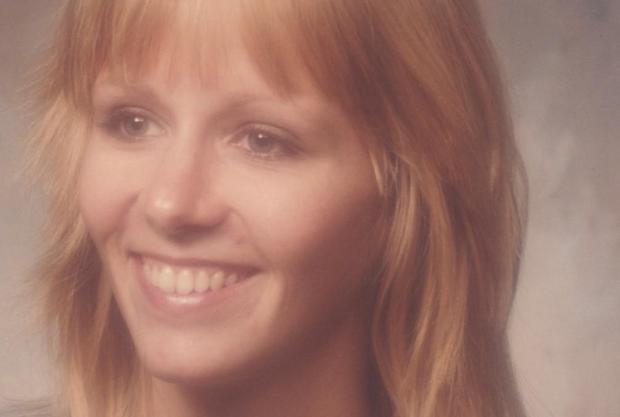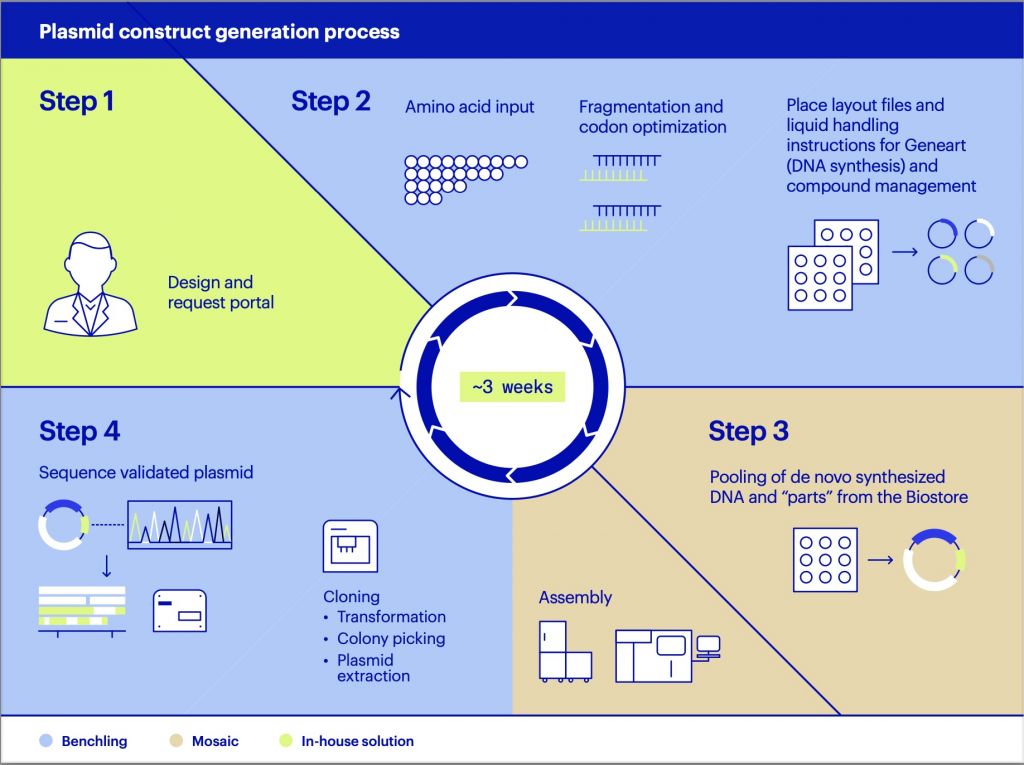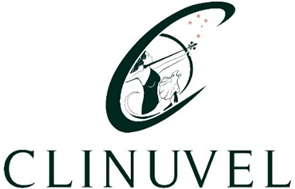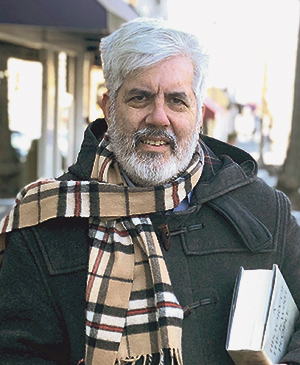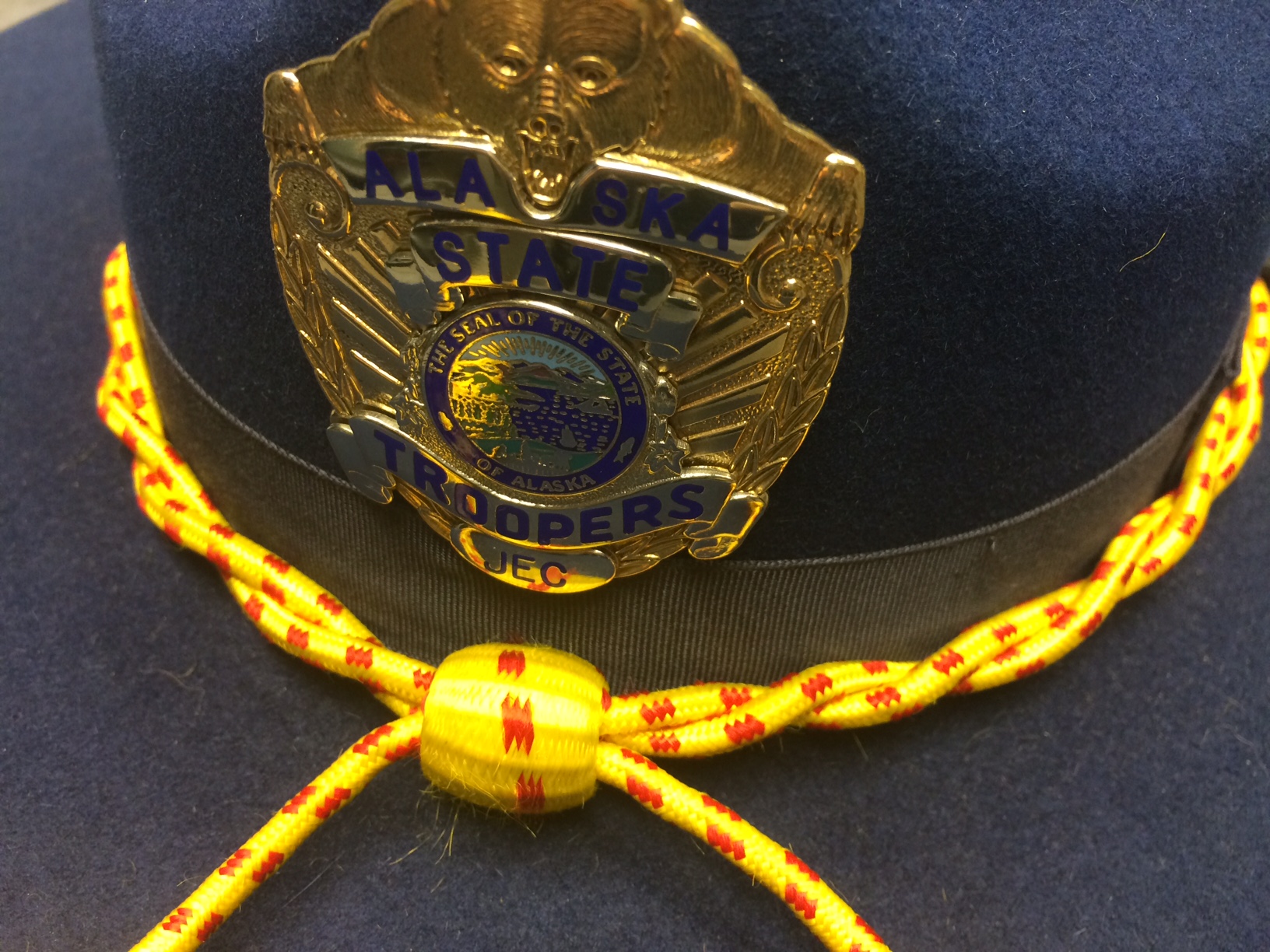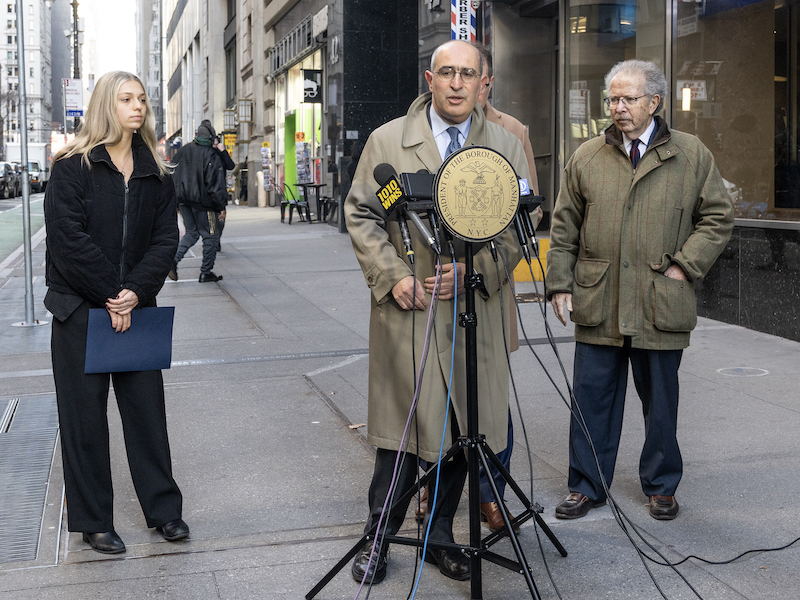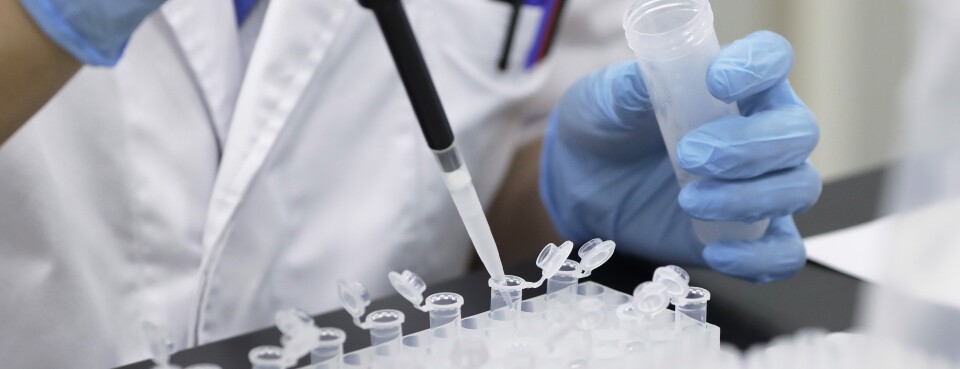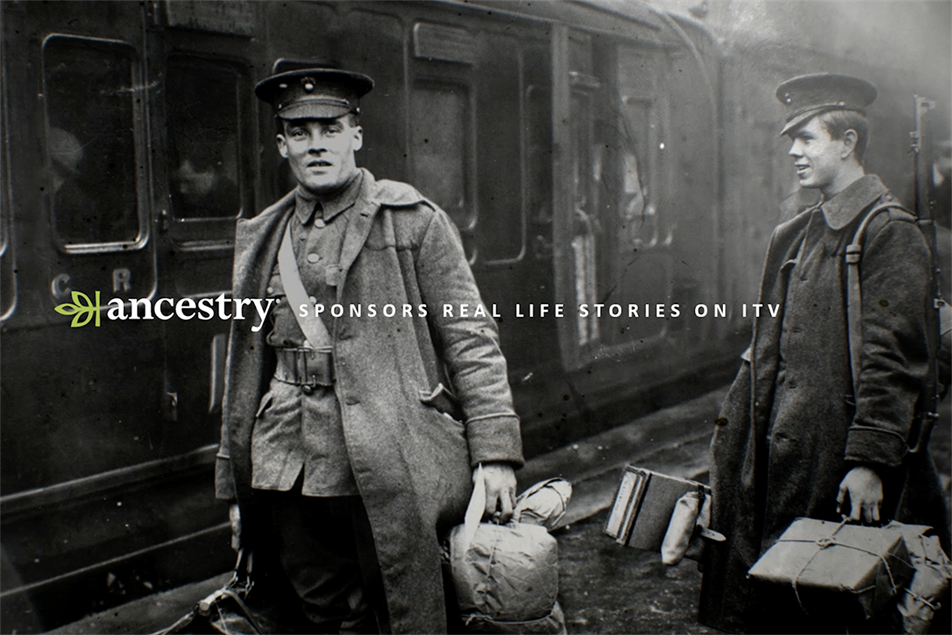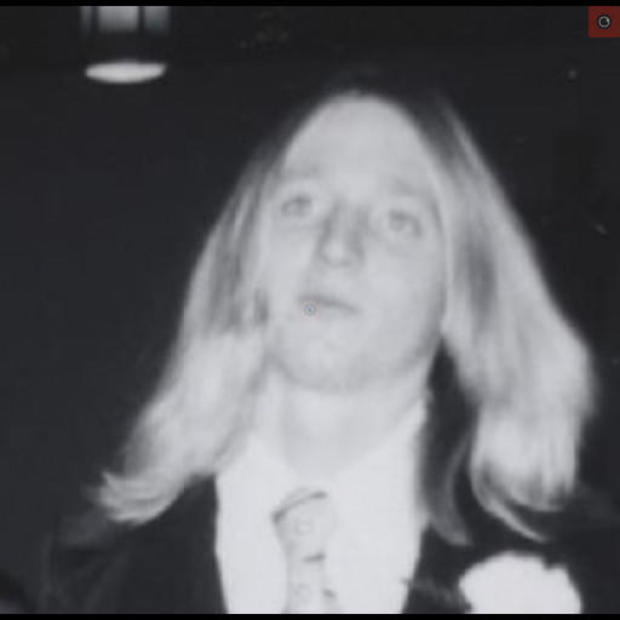In the year since the arrest of the man believed to be the notorious Golden State Killer, the world of criminal investigation has been radically transformed.
Using an unconventional technique that relies on DNA submitted to online genealogy sites, investigators have solved dozens of violent crimes, in many cases decades after they hit dead ends. Experts believe the technique could be used to revive investigations into a vast number of cases that have gone cold across the country, including at least 100,000 unsolved major violent crimes and 40,000 unidentified bodies.
Many have called it a revolutionary new technology. But credit for this method largely belongs to a number of mostly female, mostly retired family history lovers who tried for years to persuade law enforcement officials that their techniques could be used for more than locating the biological parents of adoptees.
One was Diane Harman Hoog, the 78-year-old director of education at DNA Adoption, who realized in 2013 that she could apply the techniques she was using to identify two bodies she’d read about in a Seattle newspaper. “This is too complicated,” she said she was told when she reached out to a detective. Four years later, Margaret Press, a 72-year-old retired computer programmer and skilled family tree builder in California, tried to help her local sheriff with a similar case. No one would return her calls.

Fast forward to April 25, 2018, the day that a gaggle of California prosecutors announced that an “innovative DNA technology” had been used in the Golden State Killer case.
The innovator was Dr. Barbara Rae-Venter, a genetic genealogist who had uploaded crime scene DNA to GEDMatch.com, a low-key genealogical research site run out of a little yellow house in Florida. Dr. Rae-Venter, 70, and her team soon found a suspect by using the genetic and family tree data provided by his cousins.

Listen to ‘The Daily’: A New Way to Solve a Murder, Part 1: The Genetic Detectives
Genealogy websites have led to major breakthroughs in decades-old cold cases. But the revelations may come at a price.
transcript
0:00/26:55
-26:55
transcript
Hosted by Michael Barbaro, produced by Rachel Quester, Kelly Prime and Julia Longoria, and edited by Larissa Anderson and Lisa Chow
Genealogy websites have led to major breakthroughs in decades-old cold cases. But the revelations may come at a price.
michael barbaro
From The New York Times, I’m Michael Barbaro. This is “The Daily.” Today: A year after police used a genetic database to crack the case of the Golden State Killer, the same technique has been used to arrest nearly 40 other people. Now, for the first time, one of those cases is headed to trial. In Part 1 of a two-part series, the story behind the tool that is transforming law enforcement and testing the limits of privacy. It’s Thursday, June 6. Heather, where does this story begin?
[phone ringing]
heather murphy
So the story begins with this guy.
curtis rogers
This is Curt Rogers.
heather murphy
Hi, Curt.
heather murphy
Curt Rogers.
heather murphy
It’s Heather.
curtis rogers
Hi, Heather. How are you?
heather murphy
And Curt Rogers is an entrepreneur. He spends his life in a lot of different kinds of businesses. At one point, he runs a series of candy shops with his father in Florida.
michael barbaro
Heather Murphy has been covering DNA technology for The Times.
heather murphy
For a long time, he worked in —
archived recording
Then start with creamy fresh Hellmann’s real mayonnaise —
heather murphy
— trying to develop markets for Hellmann’s mayonnaise products in Asia.
archived recording
— turn even a sandwich into a special treat.
curtis rogers
For one thing, we wanted to introduce mayonnaise into Japan. They were not familiar with mayonnaise. So it was trying to figure out how it would fit into their eating habits.
heather murphy
And what ends up happening, though, is he gets interested in genealogy, like a lot of people do as they get older.
curtis rogers
Throughout my life, I’ve been working on this as a hobby.
heather murphy
And back then, there was this site — and actually still is this site — FamilyTreeDNA. And somebody said, ah, you should join this project for people with the last name Rogers. And it helped people with the last name Rogers figure out how they were related. So he did, and he got really into it. He was so into it, actually —
curtis rogers
Well, I was asked to manage the Rogers group for one of the testing companies, FamilyTreeDNA.
heather murphy
But pretty soon, he became the administrator for the Rogers project. And so what that really means is he’s just trying to help his fellow Rogers connect, and he’s doing a pretty good job at it. But he’s getting frustrated, because —
[music]
curtis rogers
They offered kind of a cookie-cutter type of a website.
heather murphy
It’s all just a little bit clunky.
curtis rogers
And I wanted something more interactive.
heather murphy
And so he asks his network of Rogers, does anybody know a guy?
curtis rogers
So I found a person who is very technically oriented, which I am not.
heather murphy
And yes, one of the Rogers knows a guy.
curtis rogers
And was able to talk him into making a few algorithms for me so we have a much more interactive site.
[music]
heather murphy
And then we’re getting to around 2010, and he’s hearing that people are starting to do DNA testing with sites like Ancestry.com and 23andMe.
curtis rogers
These companies could test people, and then they could match the people they’ve tested with other people they’ve tested. But there was no way for them to match with people who’d been tested by other companies.
heather murphy
The problem with these other sites is that you have to pay to join them, and then they analyze your DNA. And once they do that, you can only find relatives who also tested with and paid to join those sites. So he sees this opportunity to create a site where no matter who you tested with, no matter who you paid to join previously, you can take those files that those sites created, upload them for free, and find relatives who’ve tested with all kinds of companies. And he also sees this opportunity to help people find and understand not just how they’re related to second cousins, but way more distant relatives. And so he asked this programmer, who’s now his business partner, to make this.
curtis rogers
And he did it.
[music]
curtis rogers
Anyone who had been tested by any company could put their information on our site if they wished to do so, and then find matches with people who had been tested with other companies. And it was such a great program. I said, this is really too good for just my little Rogers surname group. Let’s start another website and share this with other people.
heather murphy
And so that’s how their website began.
heather murphy
And how do I say GEDMatch?
curtis rogers
Yeah, you said it absolutely correctly. It is GEDMatch.
heather murphy
Curt calls it “jed-match.” His partner calls it “ged-match.”
michael barbaro
So for people who are looking for relatives, it’s a free place where they can go to find many more potential matches, no matter who the people on that site tested with.
heather murphy
Yeah, exactly. And GEDMatch just takes off. Curt told me that he was expecting, O.K., maybe 10 percent growth. That would be good based on working at something like the mayonnaise business. But he is far exceeding that. The number of uploads are doubling every year, and that’s without any kind of advertising.
michael barbaro
Wow.
[music]
heather murphy
And they’re growing and growing and growing so fast that, at some point, they crashed the server.
michael barbaro
Basically too many people are using it.
heather murphy
Too many people are using it. They’re getting so many emails that Curt’s wife is really angry with him because all he’s doing is responding to emails all day.
curtis rogers
Let me just say, the first one I ever did that was meaningful was a woman who didn’t know her father because her mother had done a test-tube baby. And so she finally found her father. And she got up the courage and called him, and she said who she was. There was a big hesitation on the other side. And the father then said, this is the happiest day of my life. Today is my birthday, and there is no greater gift than this one. And he was crying. Things like that make you realize how much you do help people. That’s really what it’s all about, helping people.
heather murphy
But aside from these letters, Curt really had no idea how people were using his site across the country.
michael barbaro
How were people using his site across the country?
heather murphy
Well, fast-forward to 2015.
[telephone line ringing]
There is an investigator named Deputy Pete Headley.
peter headley
Headley here. Can I help you?
heather murphy
And he’s working on a case —
heather murphy
Hi. Can you hear me?
peter headley
Yes, I can.
heather murphy
— about a woman named Lisa.
[music]
heather murphy
It begins when this woman is just 5 years old. This is the late ‘80s. She’s living in a trailer park in California with her father, and he’s not taking very good care of her.
peter headley
There was a couple there, older couple, that befriended them.
heather murphy
And the neighbors start to notice.
peter headley
They knew something was wrong, living in the back of a camper shell like that. They heard Lisa crying at night sometimes.
heather murphy
And they’re talking to him, and they say, oh, she’s such a sweet girl. We’re happy to help out with her sometimes.
peter headley
They told him that their daughter was having a hard time having kids, and she’d like to adopt.
heather murphy
And so they take her for what starts as a few weeks. It’s this sort of trial adoption. Obviously, this is a pretty unconventional situation. And during the course of those few weeks, they start to notice that it’s even worse than they thought. She’s clearly been sexually abused. And during this time, he disappears. They don’t know where he went. So they go to the local sheriff’s department and say, what should we do? And the sheriff puts out a warrant for his arrest, both for child abandonment and for abuse. The little girl ends up in foster care. And eventually they find him and arrest him.
peter headley
He was in jail for about a year and a half. When he was released, he immediately absconded parole. And his location was unknown again until —
heather murphy
And then quite a few years later —
peter headley
— he was arrested in 2002 in Contra Costa County.
heather murphy
— he’s arrested again, this time for murder.
peter headley
And when they arrested him, they ran his fingerprints. And it came back with all these other A.K.A.s.
heather murphy
So you had a list of different identities. How many identities we’re talking for him?
peter headley
Let me see. We have Robert Evans, Curtis Kimball, Gordon Curtis Jensen, Gerald Mockerman, Lawrence Vanner, [INAUDIBLE] Jensen, and different variations on the names. And they saw his previous criminal history involving Lisa, and they obtained DNA from him at that time and compared it to Lisa. And at that point, everyone realized he’s not related at all. Where did he get this kid? That’s when we went back and reopened the case to try to determine who she really was and where he took her from.
[music]
michael barbaro
So that little girl whose neighbors were concerned about her dad, and that dad got arrested and she goes into foster care, this test is showing he’s not actually her dad.
heather murphy
That’s right. So this woman grew up thinking that she was abandoned by her abusive father. Now, as an adult, she’s learning, actually, her abusive father was not her father, he was her kidnapper.
peter headley
Well, we know this suspect kidnapped her.
heather murphy
And she has no idea who she is.
peter headley
But we don’t know who she is, so we’re trying to determine who she is.
heather murphy
So Deputy Pete Headley, he’s one of these traditional cold-case detectives who never give up.
peter headley
I just kept hitting dead ends, and it was really frustrating. But I had promised Lisa that I wouldn’t give up.
heather murphy
You just keep working and working and working and working a case.
peter headley
And so I just kept trying to think of any possible way that we could identify her.
[music]
michael barbaro
We’ll be right back. So Detective Pete Headley is hitting dead end after dead end in the Lisa case. What does he do?
heather murphy
So by 2015, he starts to hear that adoptees are finding their biological parents through these genealogy sites. And he thinks, wait, actually, couldn’t that help us? So he reaches out to an organization that’s known for this type of thing.
peter headley
I just sent an email to DNAadoption.com asking them if the same methods that they use to find adoptees’ bio families could be used to identify Lisa. Barbara Rae-Venter responded to my email.
barbara rae-venter
O.K., I’m going to take the headphones off, one second. I need to take my earrings off.
michael barbaro
And who is Barbara Rae-Venter?
heather murphy
Barbara Rae-Venter is a very interesting character.
barbara rae-venter
I arrived in the U.S. in December of ‘68.
heather murphy
She’s originally from New Zealand.
barbara rae-venter
I applied to the University of Texas Law School, and I was accepted.
heather murphy
She spent a lot of her life as a patent attorney, and she worked on all kinds of interesting biotech innovations.
barbara rae-venter
Anything from new organisms for making better strains of penicillin —
heather murphy
Including the first genetically modified fruit.
barbara rae-venter
— to the Flavr Savr tomato.
heather murphy
The Flavr Savr tomato for a company that later became part of Monsanto.
heather murphy
Did you ever find yourself having to defend your employer to your friends?
barbara rae-venter
I didn’t make a big point of mentioning that I did genetically modified food and other things, no. [CHUCKLES]
heather murphy
As she got older in life, she got interested in genealogy, as many people do. And she volunteered with an organization called DNA Adoption, where she helped adoptees to find their biological parents, and she was really good at it.
barbara rae-venter
For me, of course, I understand all the science. I don’t need tutorials on that. So for me, it was probably a little easier than for most people, because all I’m trying to learn is how to actually use the DNA in conjunction with research techniques for traditional family history research.
heather murphy
And then one day, she gets a message from Deputy Pete Headley.
barbara rae-venter
I was working on my computer on something, and the email came in. And to me, it was an intriguing question. Could we, in fact, identify somebody who had no clue who she was when all we really would have is her DNA? We didn’t know anything else about her.
peter headley
That’s when Barbara Rae-Venter responded back and said yes. But because we had no geographical information on her, it was going to be difficult.
michael barbaro
So how does she go about finding this woman’s parents?
barbara rae-venter
I mainly worked through Deputy Headley, but I did have conversations with Lisa at various times. She’s a very charming, very sweet person. But she also is obviously wanting to very much maintain her privacy.
heather murphy
So what she needs to do is she needs to find some relatives, hopefully close relatives.
barbara rae-venter
Theoretically, the technique that we were using for finding both relatives should work for somebody like Lisa. And so I had Lisa test at Ancestry, 23andMe, and FamilyTreeDNA.
heather murphy
And —
barbara rae-venter
And also upload to GEDMatch.
heather murphy
— Curt’s site GEDMatch is an essential tool for her.
peter headley
And all the matches that showed up there, Barbara would build a tree up from these people that are related to her until the trees cross and you get to an ancestor in common.
barbara rae-venter
I hope that it’s somebody relatively close, like a great-grandparent or a great-great-grandparent. And at that point, I then search for all of the descendants of that common ancestor.
peter headley
So then she can say, your victim is a descendant of this ancestor in common. And then as she followed the trees back down to the living folk, I would use all of our law enforcement resources to find those living people and contact them.
heather murphy
Like what kind of resources?
peter headley
Everything from D.M.V. records to old census records. But at this point, my primary job with Barbara was to find the living folk and call them up and start asking them to do a DNA test. And that’s how you narrow it in. If the amount of matching DNA increases, you know that you’re getting closer to the correct family descendants.
heather murphy
And what did you say when you contacted them?
peter headley
It was difficult making cold calls like that. I would always start off with, I am working on a cold case, and I’m hoping you can help me out. Some people, they would just hang up. A lot of people thought it was a scam. I had one woman that thought I was going to try to clone her.
heather murphy
[LAUGHS]
peter headley
Yeah.
heather murphy
So this goes on for many months. Barbara estimates at the end that it takes 20,000 hours of work from about 100 volunteers.
michael barbaro
Wow.
heather murphy
Many of whom are distant relations of Lisa’s.
barbara rae-venter
The maternal line tree, in particular, was enormous. It had something like 18,000 people in it.
heather murphy
So eventually, they narrow Lisa’s father down to one of five brothers who seemed to live in New Hampshire. Unfortunately, all of the brothers were married when Lisa was conceived, and so they’re not really happy to hear that they might have this other child.
michael barbaro
Got it.
heather murphy
Yeah. So they don’t want to be tested, which is not helpful. On the other side of Lisa’s family, though, on her mother’s side, Barbara and her team have more luck. They eventually find this person who, based on looking at the family tree, appears likely to be Lisa’s grandfather.
michael barbaro
That’s a breakthrough.
heather murphy
It’s a breakthrough. He is also skeptical of all of this at first. But they eventually convince him it’s legit, and he agrees to be helpful, partly because another family member convinces him. And they do a DNA test, and what they find is it confirms that he is indeed Lisa’s grandfather. And what her grandfather tells her is the last time he saw her, she was two. And her mother was involved with this guy.
peter headley
And his name was Bob Evans.
heather murphy
The family didn’t know a lot about him.
peter headley
At the time, he talked up that they owed money to a bunch of people, insinuated that it was to dangerous bad people that they owed money to, even.
heather murphy
But in the middle of the night, they absconded, and the family never heard from them again. And they just assumed that she’d just gone off with this guy. They didn’t know what had happened.
peter headley
That’s when I contacted Manchester Police Department and briefed them on the case. Told them, this is a missing person. Denise Beaudin moved away with this guy Bob Evans, and she’s actually a missing person.
heather murphy
So what did you tell Lisa?
peter headley
When I called her up, I told her that we had been able to figure it out. And she got very quiet. And then I asked her if she’d like to know her name.
heather murphy
So what happened?
peter headley
I told her her name is Dawn Beaudin. And then she called me a couple days later, had had some time to think about it and was wondering, well, should she change her date of birth, change her name? It had to be a big shock. And I just told her, that’s something for you to think about and decide on.
[music]
barbara rae-venter
It was very emotional being able to actually do that for her, particularly knowing what had happened to her. And so it was very nice to be able to give her back her family and to give her her name.
peter headley
It was very satisfying to be able to tell her who she is. It made it all worth it.
[music]
heather murphy
So what Deputy Pete Headley and other investigators believe is that sometime after he kidnapped Dawn, he killed her mom. They have not found her body. But the reason they believe this is because this was part of a pattern of behavior. It’s believed that he killed at least two other women he was involved with and three children.
michael barbaro
Wow. But not Dawn.
heather murphy
But not Dawn. We still do not know the extent of his crimes, but he’s known as the Bear Brook Killer. And he died in prison.
michael barbaro
So I just want to get this straight. That little girl who is taken by her neighbors and ends up in the hands of police, the man who she thought was her father was actually a serial killer who kidnapped and likely murdered her mother.
heather murphy
Yes.
michael barbaro
And Lisa is Dawn.
heather murphy
Lisa is Dawn.
michael barbaro
And Barbara has done all this using GEDMatch.
heather murphy
Yes. And this is a really big deal, because it shows that you can use GEDMatch and use family tree building techniques to identify much more than just an adoptee’s parents.
michael barbaro
Right.
heather murphy
You can identify a person.
[music]
And so word gets out that Barbara and Pete solved the Lisa case. And eventually, there’s another investigator. He’s been working on this cold case for decades. He has no real leads. All he has is some crime scene DNA. And so he reaches out and asks for help.
archived recording
Police finally got their break in the Golden State Killer case by combing through commercial genealogy websites.
heather murphy
And this is the case of the Golden State Killer.
archived recording 1
Police say one of the most elusive serial killers in American history.
archived recording 2
Golden State Killer.
archived recording 3
Golden State Killer.
archived recording 4
The Golden State Killer has been captured.
archived recording 5
At least 12 murders.
archived recording 6
12 murders.
archived recording 7
45 rapes.
archived recording 8
45 rapes and more than 100 burglaries.
archived recording 9
They have been searching for more than four decades. And tonight, the major clue —
archived recording 10
Investigators compared DNA found at the crime scenes —
archived recording 11
We found the needle in the haystack.
archived recording 12
— to genetic information listed on the websites.
archived recording 13
He’s been called the East Side Rapist, the Visalia Ransacker, the Original Night Stalker, and the Golden State Killer. Today, it’s our pleasure to call him defendant.
heather murphy
So all of this work from the Lisa case has led to this groundbreaking moment. This is the first time that we’re seeing a public arrest in such a high-profile case, a case of a serial killer that has eluded detectives for decades. And now they finally have a name. They finally have somebody behind bars. And that is because they have used this technique that people are calling genetic genealogy.
michael barbaro
And that leads us back to the site that Curt Rogers built — GEDMatch.
heather murphy
Yeah. It’s only after the announcement that the alleged Golden State Killer has been arrested, Curt told me, that he learned that his site had been pivotal to this investigation. He had been asked previously if his site could be used by law enforcement to identify murderers and rapists, and he’d actually said, no, he couldn’t explicitly sanction it because people were there primarily for genealogical research. No one was expecting to be cooperating with law enforcement.
curtis rogers
My concerns were that there could be a violation of privacy. I had to figure that out in my head, if that was true or not.
heather murphy
And what helped you figure it out?
curtis rogers
Time. A lot of sleepless nights.
heather murphy
But then he starts getting these emails, and they are so congratulatory. They are telling him that he has done great things for the world, and he is feeling incredibly proud of what he has created.
curtis rogers
It’s like when they first discovered that fingerprints could be used to identify individuals. We’ve now started a whole new field of forensics. It’s not as direct as fingerprints. Don’t get me wrong. But it’s a whole new way of finding people.
heather murphy
So he and his partner decide to officially open up GEDMatch to law enforcement.
curtis rogers
To me, the real important thing was the people who had been victims, and that includes their families. And bringing closure to them is extremely important to me. It really is.
heather murphy
And they rewrite the user agreement so that what it now says is that, by default, users are opted in to allow their profiles to be searched by law enforcement for the purposes of sexual assault and murder cases.
[music]
curtis rogers
I’d never realized how many families and people there are out there who have been suffering for decades because of some violent crime that’s happened in their family. And there must be millions, literally millions, of people like that.
heather murphy
And that changed everything.
[music]
michael barbaro
Tomorrow on “The Daily,” Part 2 of the story.
cece moore
At the time of the Golden State Killer suspect arrest, a lot of people were opining that this was going to be a one-off, that it was too difficult, too much time, investment, et cetera. And I wanted to prove that that wasn’t true, that the power of genetic genealogy could absolutely be applied to cold cases and even active cases. There was no reason that that couldn’t happen.
[music]
michael barbaro
We’ll be right back. Here’s what else you need to know today. On Wednesday, YouTube said it would remove thousands of videos and channels that advocate for bigoted ideologies, like neo-Nazism and white supremacy, in the latest attempt by a major technology company to limit hate speech. YouTube, which is owned by Google, said its new policy would ban videos that justify discrimination by claiming a specific group is superior to others or that deny the existence of violent incidents, such as the Holocaust and the Sandy Hook school shooting. And the Trump administration said it would drastically reduce federal spending on medical research that uses tissue from aborted fetuses, fulfilling a longtime goal of anti-abortion groups. Scientists have long used fetal tissue to test drugs and vaccines, targeting everything from H.I.V. to cancer, and say that in many cases, there is no substitute. But opponents, including Representative Steve Scalise, the number two Republican in the House of Representatives, called federal funding of such research immoral. That’s it for “The Daily.” I’m Michael Barbaro. See you tomorrow.
And that was how a former police officer, Joseph DeAngelo, came to be charged with 26 counts of murder and kidnapping in connection with scores of rapes and murders that were committed across California in the 1970s and ’80s. In interview after interview, Paul Holes, a determined investigator who had spent decades chasing false leads, rejoiced in his decision to involve Dr. Rae-Venter.
“Barbara really braved the pass,” said CeCe Moore, a genetic genealogist who was also among the first to see the potential in the technique. Within a few weeks of the announcement, she began working with Parabon, a forensic consulting firm.
In rapid succession, Parabon’s work led to 49 genetic identifications, reopening a number of cold cases: the 1987 double murder of a young Canadian couple, six rapes in North Carolina and the slaying of a Stanford University graduate 46 years ago. The technique resulted in at least 17 arrests, including people who had never been under any suspicion, such as a well-established party D.J. and children’s entertainer in Pennsylvania. The National Center for Missing and Exploited Children is revisiting about 700 cases involving unidentified children’s remains and has identified about 15 in the past year.
An additional 300 cases are in the works: old murders, serial sexual assaults, and unidentified bodies, according to estimates by various genealogists and investigators.
Some question the ethics and legality of the technique. They point out that customers of genealogy companies did not realize they would be signing up to help criminal investigations, although GEDMatch discloses that profiles could be used to investigate violent crimes. A recent decision by FamilyTreeDNA to pivot from secretly cooperating with the F.B.I. to marketing itself as a means to catch killers has also left many alarmed.
Some want to see the same regulations for family genealogy sites that states have imposed on the use of government DNA databases, such as the F.B.I.’s Codis system. Charles E. Sydnor III, a state legislator in Maryland, said, “When we’re not going according to the law, I think that makes us no better than lawbreakers.”
In Maryland, the police are barred from identifying suspects through relatives in criminal DNA databases. Despite the law, police departments in two counties have done precisely that with GEDMatch.
The law aside, individuals have little recourse to protect their genetic data. If you are an American, it is likely that your name can be extrapolated even if you have never taken a DNA test. In the hands of an advanced genealogical sleuth, often all that’s needed to identify someone from a drop of saliva, blood or semen are the DNA profiles of two third cousins.
What’s a third cousin? It’s someone who shares a set of your 16 great-great-grandparents. We all have at least 800 of them out there somewhere, and there’s a good chance that some were once excited enough about genealogy to join GEDMatch or FamilyTreeDNA.
Several recent cases show what this technique could mean for the future.
The Facebook message didn’t make sense at first. In March, a stranger congratulated Brandy Jennings of Vancouver, Wash., for helping to solve a 1979 murder in a small town in Iowa. Her second cousin once removed, Jerry Lynn Burns, a 64-year-old small business owner and widower, had been charged. They had never met.
“It teaches me to read what I agree to,” Ms. Jennings said.
She had uploaded her Ancestry.com file to GEDMatch but had never returned to the site, finding it too confusing. The search warrant revealed that investigators had found her profile useful.
She said she wished that she had been given a heads up or that she had been eligible for the longstanding $10,000 reward, though she feels positive about her contribution. “Any murder deserves to be solved,” she said.
On Nov. 1, 2009, Holly Cassano, 22, who lived in a mobile home park in Mahomet, Ill., failed to pick up her baby girl from her mother’s home. The worried grandmother went to check on Holly and found she had been stabbed to death after her evening shift as a supermarket cashier.
Last May, after the publicity over the Golden State Killer arrest, Parabon began offering its hundreds of clients a $3,500 add-on service in which Ms. Moore or another genetic genealogist builds a series of interlocking family trees. The Champaign County Sheriff’s Office was a client.
Getting from cousin to great-grandmother to suspect can be complicated. The case did not look promising when Ms. Moore began working on it last summer. But then, during a root canal, she said, “I was lying there in a chair and something popped into my head.”
Other experts describe similar epiphanies when building family trees. In this case, DNA extracted from a discarded cigarette reinforced her hypothesis. In August, the neighbor who had smoked that cigarette, Michael Henslick, confessed to the killing.
More on genetic genealogy
How an Unlikely Family History Website Transformed Cold Case Investigations
Genealogists Turn to Cousins’ DNA and Family Trees to Crack Five More Cold Cases
How Genetic Sleuthing Helped a Kidnapped Girl Recover Her Identity
DNA Is Solving Dozens of Cold Cases. Sometimes It’s Too Late for Justice.
Most White Americans’ DNA Can Be Identified Through Genealogy Databases
A week before the Golden State Killer announcement, a man broke into the house of Carla Brooks, 79, in St. George, Utah, beat her and sexually assaulted her. In July, the Police Department there became one of the first agencies to apply genetic genealogy to a recent case.
“When there’s the potential to stop someone in their tracks, it’s a different feeling,” Ms. Moore said. The trail of cousins led across the country to Massachusetts and back to Spencer Glen Monnett, 31, who was arrested in Utah. He pleaded guilty in February.
The case raises questions that the police, genealogists and victims’ families have mentioned in interviews: Why choose one case over others? Should the priority be new cases? Easier cases? Those in the media spotlight? Are older cold cases worth pursuing, even if the people who committed them are likely dead?
Yes, says Bill Thomas. His sister Cathy was among eight people who were killed in southeastern Virginia in the late 1980s in a series of slayings that came to be known as the Colonial Parkway murders. “For me and for my family it’s never been about a prosecution,” he said. “I’m not seeking closure. It’s not like the sun will come out tomorrow. I don’t care if he is dead. I want to know who he is.”
A week before the Golden State Killer arrest, a tiny piece of a bloody shirt was headed to a lab. A month later, Dr. Press, the retired computer programmer, and Colleen Fitzpatrick, a retired 64-year-old rocket scientist, uploaded the genetic file to GEDMatch. They were seeking relatives of an unidentified woman whose body was found on a hiking trail outside Reno, Nev., in 1982.
The pair had been using genetic genealogy to identify bodies for nearly a year through their organization DNA Doe Project. Several changes in 2017 and 2018 had led to a boom, Dr. Press said. DNA sequencing had gotten better and cheaper.
More important, she said, the size of genealogical databases had grown rapidly. In fact, according to a recent study, the DNA of 90 percent of Americans of European descent will soon be identifiable using genetic genealogy. Americans with that background are overrepresented on sites like GEDMatch.
Some believe this levels the playing field. African-Americans are overrepresented in the F.B.I.’s Codis database.
Now, so long as a person’s ancestors have been in the United States for a few generations, Dr. Press and others estimated that a skilled genetic genealogist has at least a 60 percent chance of making an identification.
In the case of the woman on the trail, Dr. Press said she was extremely lucky, spotting a first cousin once removed. Alas, one of the next key matches had been adopted, so they located the cousin’s biological parents. Within a few months, the woman on the trail had a name. It has not been announced, because investigators are now trying to figure out who killed her.
A case that could result in legal precedents involves William Earl Talbott II, 55, who is scheduled to go on trial on June 3 in Snohomish County Superior Court in Washington in a double murder committed nearly 32 years ago.
He is accused of killing a Canadian couple, Jay Cook, 20, and Tanya Van Cuylenborg, 18, who were last seen alive on the ferry to Seattle from their home on Vancouver Island in British Columbia. Ms. Van Cuylenborg was found dead in a ditch in the woods in Skagit County in November 1987. Mr. Cook’s body and van were found a week later.
After tracing DNA evidence to second cousins on GEDMatch, Ms. Moore drew a connection to a couple who lived seven miles from the crime scene. Their son was Mr. Talbott, who was 23 at the time of the killings.
The judge could decide to treat clues from genealogical sites the same way that evidence from Codis or Instagram is handled, said Blaine Bettinger, a genealogist and intellectual property lawyer who works with GEDMatch.
Or the judge might find the technique to be a violation of Fourth Amendment protections against unlawful search and seizure. Dr. Leah Larkin, who runs a DNA analysis service called The DNAGeek, believes that it is.
“I don’t think that the cops should be able to look into any home they want without a warrant,” she said. “There is much more private information in my DNA than there is in my underwear drawer.”
The Sacramento district attorney, Anne Marie Schubert, who created a genetic genealogy unit after her department’s success in the Golden State Killer case, rejects those concerns. “We don’t get our hands on people’s DNA in these genealogy databases,” she said, just clues to how they are related to the suspect.
At stake are thousands of criminal cases and perhaps the future of genetic privacy in general. “It could end there, or it could keep on going to the Supreme Court,” Mr. Bettinger said.

